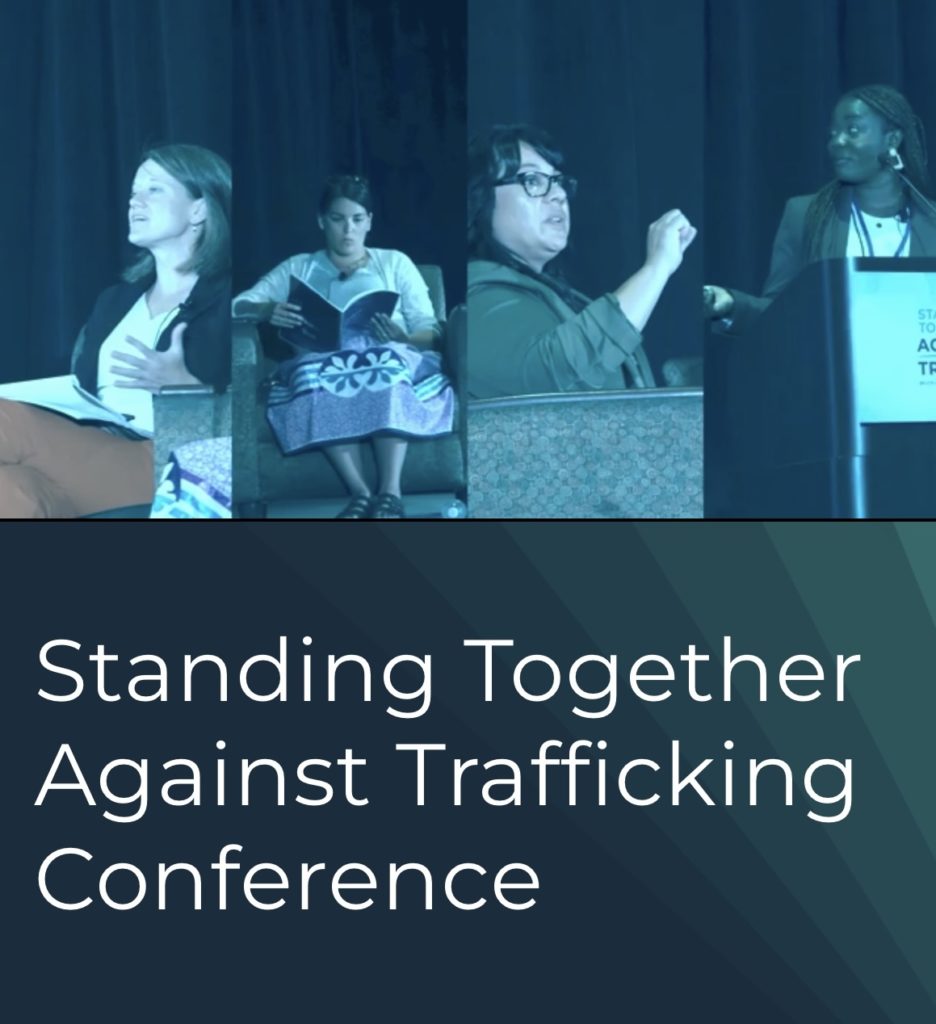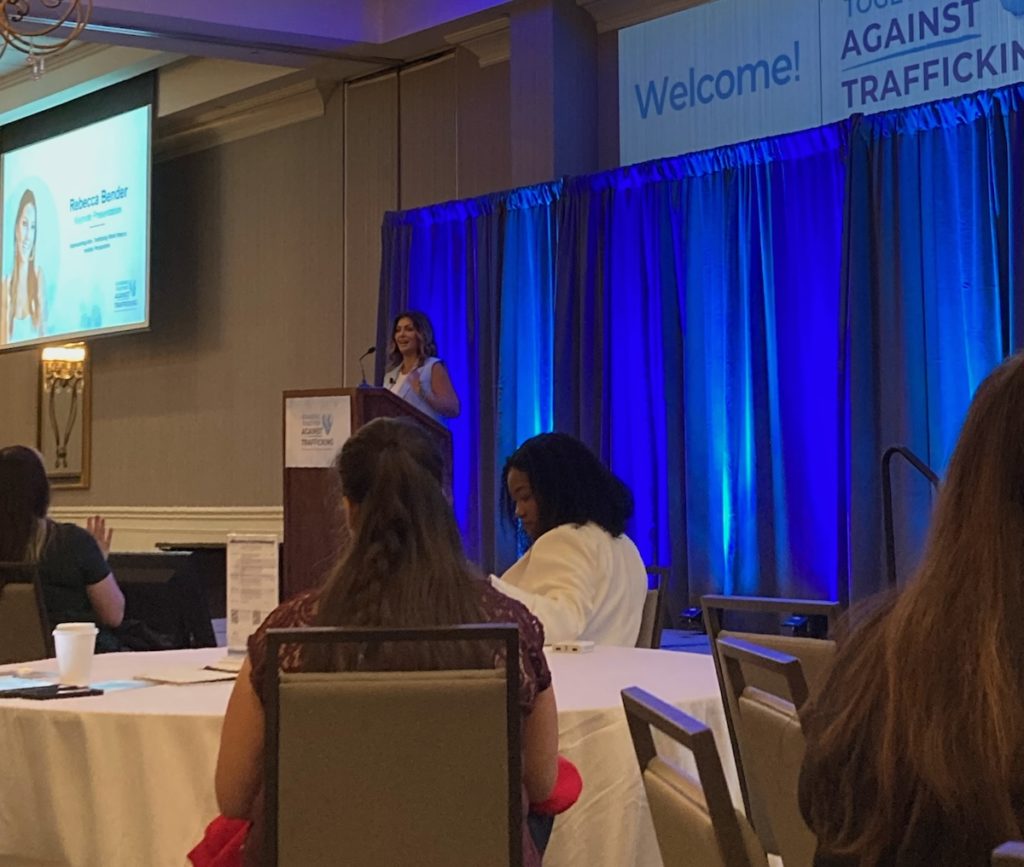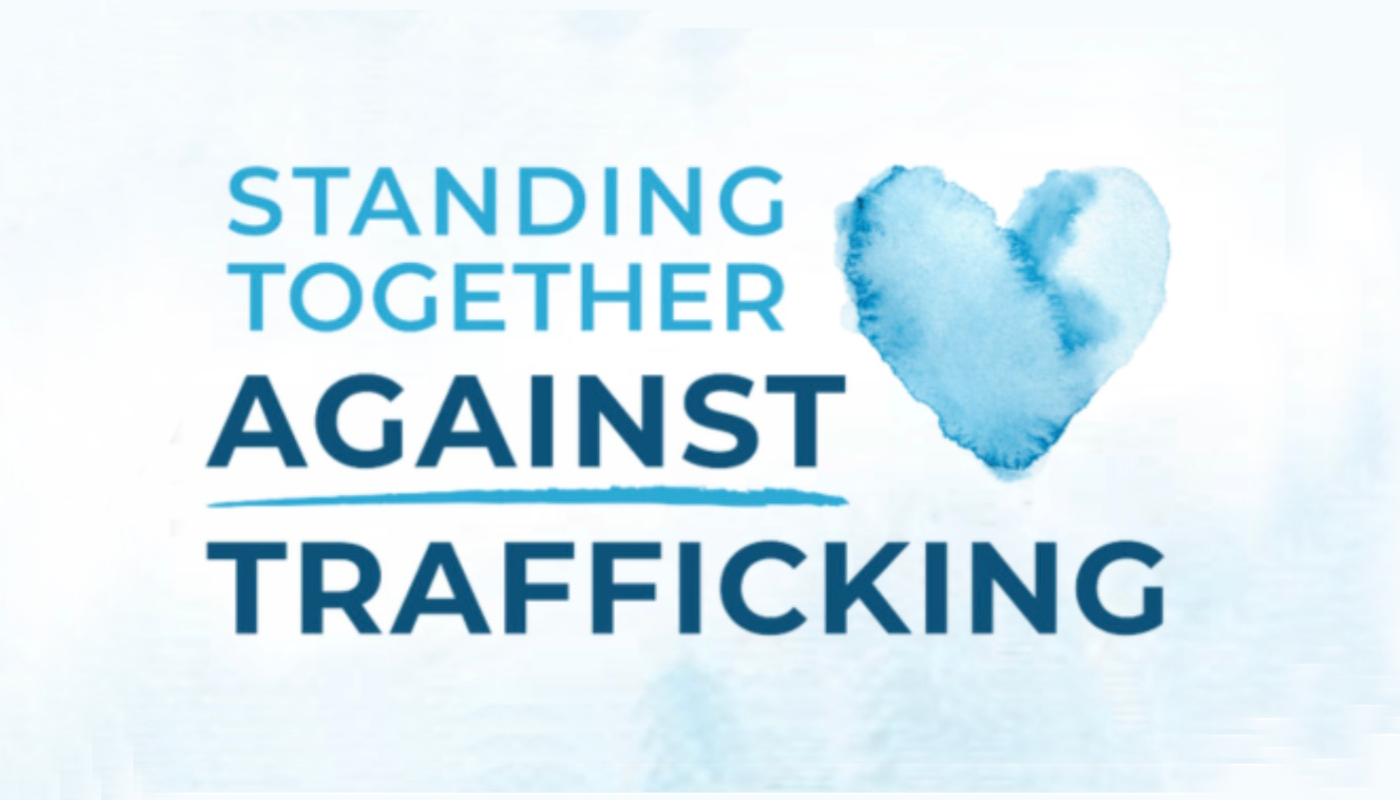Hi friends! My name is Clara Roche and I am a junior studying social work at Hope! I am deeply passionate about anti-human trafficking, and on September 17th, I had the opportunity to attend the Standing Together Against Trafficking conference put on by the state of Michigan. This was an incredibly informative and important event, that covered a myriad of topics related to the complex and abhorrent issue of human trafficking.
What is Human trafficking and how does it show up within communities?
Human trafficking can be defined in many ways. The Department of Justice defines it as, “a crime that involves compelling or coercing a person to provide labor or services, or to engage in commercial sex acts. The coercion can be subtle or overt, physical or psychological.” At its core, human trafficking is based on steady coercion and exploitation that results in a loss of an individual’s autonomy and freedom. Force, fraud, and coercion are key tenets of this issue, and serve as conduits that perpetuate the secretive exploitation of vulnerable populations. In these situations, the word coercion could be interchanged with individuals being ‘tricked’ or ‘manipulated’ by someone originally trusted. You might be thinking: This sounds horrendous, but this does not affect me or my life in Michigan, or in the United States. However, human trafficking is a multi-faceted crime that happens in this small community in Holland, all the way to the largest countries around the world. The chances are we have all probably seen someone being trafficked and didn’t even know it.

During this conference, we talked a lot about the narrative behind trafficking, which affects the way our society views trafficking, and how we intervene/work to prevent this issue. For example, when individuals think about someone being trafficked or coerced, they have been conditioned to think of one event where someone is kidnapped into a creepy white van and taken away. This is not always the case, rather, exploiters often use deep-seated levels of coercion and manipulation to prey on vulnerable populations and bind them to trafficking over time. This is an important distinction because it shows that one of the preventative measures for this problem could be providing better community support and resources that prevent an individual from being in a vulnerable state that could lead to trafficking.
What are the types or forms of human trafficking?

There are roughly 25 different types of human trafficking that are steadily intertwined into commercialism and consumerism. There are so many types because human trafficking is a highly profitable crime that generates billions of dollars in revenue each year. A couple of common types are sex trafficking, which is exploiting individuals for commercial sex; gang-controlled trafficking; pimp-controlled; cantina; and IMP/IMB (illicit massage business) trafficking. For more information about these types, check out this resource. After one of the speakers identified these forms and described her personal survivor story, we talked about the importance of wrap-around care plans and interventions for survivors and their families. Diverse solutions are needed for the myriad forms of trafficking.
Furthermore, exploitation is present at all levels of the systems that we interact with. Thus, interdisciplinary work is greatly needed to support survivors and bring exploiters to justice. In other words, you do not have to be a social worker or in the helping professions to care about this issue! We need a many of perspectives and strengths to create holistic solutions, extensive care plans, and interventions that impede exploiters’ manipulative intentions.
What is Survivor Focused and Trauma Informed Care?
The foundation of trauma-informed care is centered around empowerment. Survivors have been through so much complex trauma and suffering, that it is key to empower these individuals and help them maintain their autonomy that has been stolen from them countless times. An example that replicates this theme is when one of the speakers explained that she serves as a doctor at a Child Advocacy Center, where she sees children who have been abused or sexually exploited. She explained that it is always her goal to maintain the client’s autonomy over anything else. She gives clients a list of various checkup procedures that she could do and lets them decide what they are comfortable with. In a society that values efficiency and results, it is important to step back and have patience and grace for where people are at in their healing journey.
Additionally, trauma-informed care is when professionals take a holistic approach to trauma and work to understand the function behind the trauma or behaviors. Trauma-informed care recognizes that people are more than what happened to them, and strives to help people reduce trauma symptoms through Cognitive Behavior Therapy or even EMDR therapies. Moreover, language is very important when discussing traumatizing and deeply painful events. Thus, using the word ‘survivor’ rather than ‘victim’ is an empowering step we can all take to respect the experiences of vulnerable populations. Language shapes the way we view events, and it is important to respect the language that survivors choose to use when describing their unique experiences with trafficking.
Although I did hear a lot of survivor stories at this conference, we must not sensationalize stories of resilience because sometimes people do not want to share what happened to them at the risk of feeling re-traumatized. Thus, it is always important to have survivor voices at the table of policy decisions and intervention/prevention plans, without having the expectation that people tell us what happened to them. Again, an important theme of this conference was that survivors are much more than what happened to them, and autonomy and empowerment are key functions that lead to healing.
What is the Equality Model for Human Trafficking?
During the conference, many survivors spoke about their experiences, and many of them have felony records from being trafficked. This is a substantial problem, as criminal charges make it even more difficult for survivors to leave their traffickers and start anew. Systemic issues like poverty, socioeconomic status, racism, sexism, etc. are intertwined into these issues that serve as risk factors for people who want to escape from their exploiters. It was jarring to hear that these women who were sex-trafficked are often tricked into getting branded/tattooed by their traffickers, beaten to the point of needing bone replacements, and forced to do drugs to stay brainwashed by their trafficker. Still, the system places the blame on the survivors and charges them with criminal records for essentially being forced into trafficking through coercion or manipulation. These charges follow them for the rest of their lives and impact their children, education, loan status, insurance status, etc. Thus, the Equality Model is a model for trafficking intervention that “prioritizes the rights of those who have been exploited while holding buyers and exploiters accountable for the harm they cause.” This amazing model needs to be discussed within the criminal legal system as a form of sustainable intervention.
What can I do after reading this article?
That was a lot of information, and you might be wondering: What can I do about this issue with where I am at in life right now?
First, you can consume less! Consumption is a huge factor in labor trafficking around the globe. Start to question who made the shirt you bought at Target, how did it make its way to Target in Holland, MI? Do we really need 5 water bottles, or does the one that we have had for a couple of years still get the job done? The fishing industry is also deeply connected to human trafficking, so question the ethics behind the next fish that you eat! Start to do research into the chocolate or coffee that you consume and see if they come from ethically sourced farms that pay fair wages to their workers. Work to shop more responsibly by tracking your slavery footprint.
Second, community support is so crucial, and having strong communities is a protective factor against human trafficking. Brainstorm how you can utilize your unique strengths within the community to volunteer or find solutions to problems. Because trafficking is so intertwined into societal structures, almost any social justice work that you do can help decrease human trafficking.
Additionally, use this resource to help identify trafficking in public. Exploiters blend into society, but they still have to grocery shop, buy clothes, and run errands. Thus, if you see something that does not feel right, you can report it to the police. If we all work to better educate ourselves on what the signs of trafficking look like, we might be able to catalyze support for survivors. Support your community and support organizations who are already doing anti-trafficking work!
Finally, share this blog with others and tell your friends about what you have learned! Education and awareness are stepping stones to sustainable freedom for the millions of people who are being exploited at this very minute.
Thanks for taking the time to read and care! If you have any questions for me regarding this article or the conference feel free to reach out!


